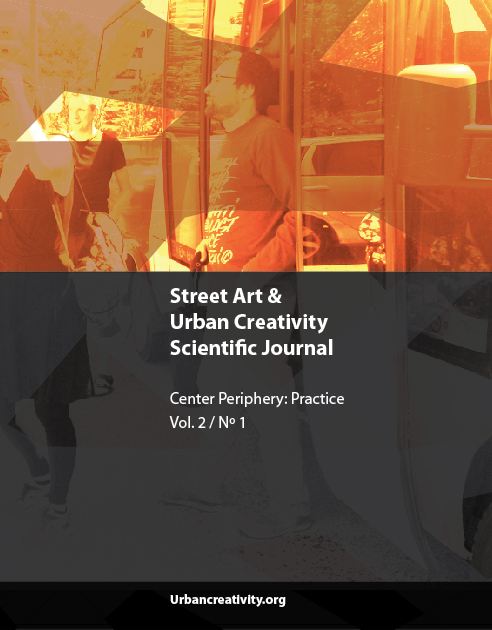Murals of Budapest in the age of creative cities
DOI:
https://doi.org/10.25765/sauc.v2i1.42Keywords:
street art, creative city, BudapestAbstract
The concepts of creative city and creative economy along with the cultural city development were born in the 1970s, when traditionally industrial centers had started to decline. From the 1990s on there has been a constant discussion of Western European and North American cities’ post-fordist culture and technology based transformation. Since the appearance of Richard Florida’s book The Rise of the Creative Class, the concept of creative city has become a fashionable and often used terminology, and in this sense there is wide acceptance of a social and economic arrangement that is based on the so-called creative class, which tends to settle down in cities open to creativity. Florida’s theory was taken over by Hungarian professional and academic circles without much criticism, and creative city is still a beloved expression and approach while discussing Budapest’s strategic vision. In this writing I analyze why street art, as a thoughtful expression of creativity, artist’s freedom and reflection of urban life, is still not sufficiently emphasized and remains in the periphery of the post-socialist Hungarian capital.
Downloads
Global Statistics ℹ️
|
162
Views
|
62
Downloads
|
|
224
Total
|
|
Downloads
Published
How to Cite
Issue
Section
License
Copyright (c) 2016 Street Art & Urban Creativity

This work is licensed under a Creative Commons Attribution-NoDerivatives 4.0 International License.
Those authors who publish in this journal accept the following terms:
-
Authors retain copyright.
-
Authors transfer to the journal the right of first publication. The journal also owns the publishing rights.
-
All published contents are governed by an Attribution-NoDerivatives 4.0 International License.
Access the informative version and legal text of the license. By virtue of this, third parties are allowed to use what is published as long as they mention the authorship of the work and the first publication in this journal. If you transform the material, you may not distribute the modified work. -
Authors may make other independent and additional contractual arrangements for non-exclusive distribution of the version of the article published in this journal (e.g., inclusion in an institutional repository or publication in a book) as long as they clearly indicate that the work was first published in this journal.
- Authors are allowed and recommended to publish their work on the Internet (for example on institutional and personal websites), following the publication of, and referencing the journal, as this could lead to constructive exchanges and a more extensive and quick circulation of published works (see The Effect of Open Access).













